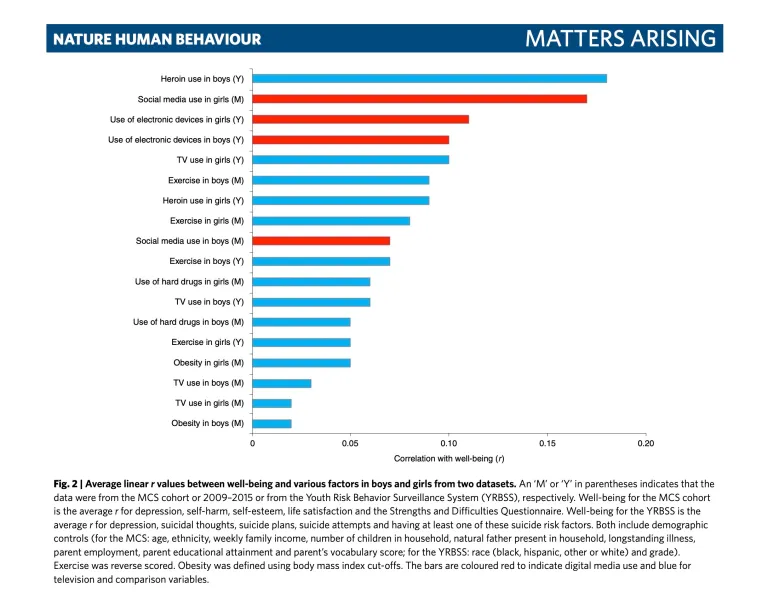Die Antwort, ob wir den Schaden der digitalen Medien unterschätzen, hängt davon ab, wie man die Daten auswertet. Die Debatte wird in einer neuen statistischen Schleuderschlacht zwischen Forschern weitergeführt.

The association of well-being with regularly eating potatoes was nearly as negative as the association with technology use (0.9x, YRBS) and wearing glasses was more negatively associated with well-being (1.5x, MCS).”
YRBS = Youth Risk and Behaviour Survey
MCS = Millennium Cohort Study
In the red corner, we have another group of influential psychologists – Jean Twenge, Jonathan Haidt, Thomas Joiner and William Keith Campbell who have now recut and re-analysed the data and published their analysis in the same journal to demonstrate how similar correlational analyses can be used to show that social media use is more linked to wellbeing than taking heroin – for girls.
One could just as easily conclude that social media use is more important for well-being than hard drug use, exercise and obesity… For girls, social media use is far more important than exercise, or even than heroin use.

As you’d guess, the comparison between heroin and social media use for girls has garnered media attention and produced a minor storm in a Twitter-cup, and prompted a response from the social-media-is-as-harmful-as-potatoes camp.
Lies, damned lies and statistics
Beyond the take-out that there are lies, damned lies and statistics – especially correlation-does-not-mean-causation statistics, what can we learn from this social media and potatoes vs heroin debate?
First, research like this needs to be understood in the context of the researchers’ previous research and points of view. Both the blue and red corners are presenting data that supports existing positions. This doesn’t make it wrong, but contextualising it within a body of research helps interpretation.
How, not how much
Second, this research perhaps shows the limits of statistical squiggle-babble squabbles about associations between loosely and variably defined variables. Until we understand the ‘how’, the ‘how much’ may be of limited value. What I think we need more granular research on the potential causal mechanisms the may – or may not – underpin any association between aspects of wellbeing outcomes and specific technology use.


